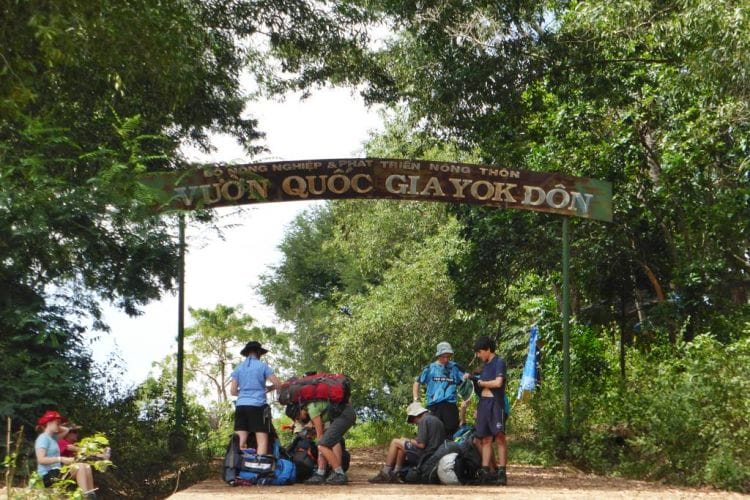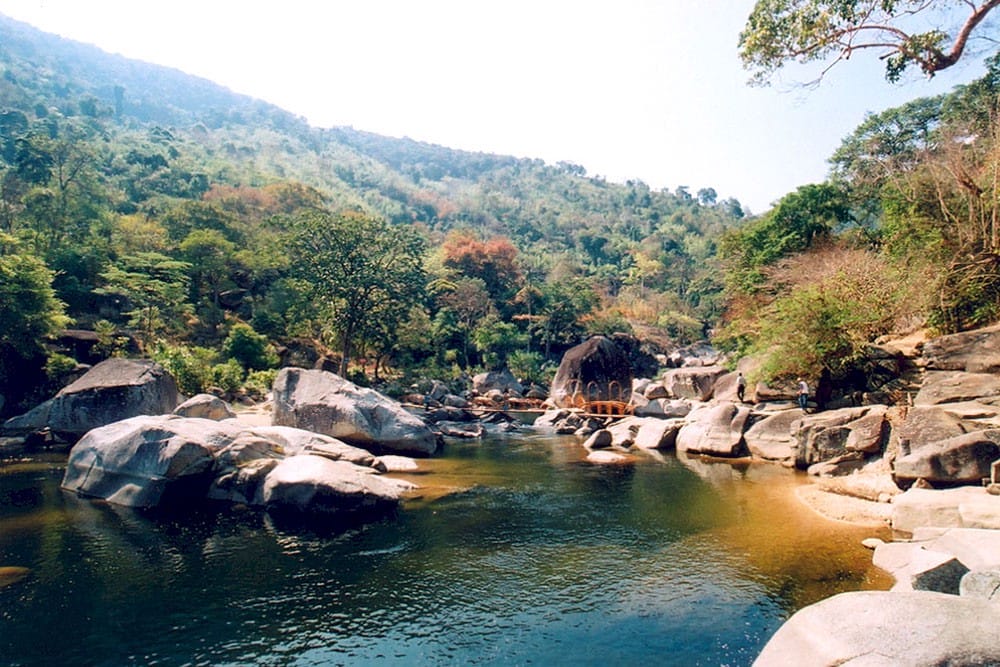The topography of the site is flat, at an elevation of 200m with lowland landscape dominated by dry forest studded with seasonal pools. Semi-evergreen forest can also be found, along watercourses. There are, however, several ranges of low hills within the national park; the highest is the eponymous Mount Yok Don at 482 m in the south-eastern range. Yok Don is bisected by the Srepok River- a major tributary of the Mekong River. During the dry season, the two largest streams at the site, the Dak Ken and Dak Na, are ramified to a series of interrupted pools.Biodiversity values.

The vegetation at Yok Don National Park is dominated by deciduous forest and semi-evergreen (mixed deciduous) forest, with smaller areas of evergreen forest, particularly on hills and along watercourses.
Unlike the deciduous forest, the semi-evergreen forest at the site has a closed canopy and is stratified into five layers. This forest type is characterized by the presence of Lagerstroemia calyculata, Shorea cochinchinensis and Anisoptera scaphula. Evergreen forest has a limited distribution in the national park, being confined to higher elevations on the range of hills in the south-east of the site. This forest type is denser and is dominated by members of the Fagaceae, Euphorbiaceae, Sapindaceae, Ebenaceae and Meliaceae families.
Because deciduous forest generally supports a lower floral diversity than evergreen forest, the diversity of plant species at Yok Don is lower than that at other national parks in Vietnam. According to Anon (1998), 474 vascular plant species have been recorded at the national park, of which 28 are listed in the Red Data Book of Vietnam. Yok Don is considered to be one of seven internationally important Centres of Plant Diversity in Vietnam.
Yok Don National Park has a reputation as an important site for the conservation of large mammals. Indeed, scientists consider the continued occurrence of asian elephant elephas maximus, gaur bos gaurus, banteng B. javanicus and tiger panthera tigris at Yok Don to be confirmed. In addition, evidence from recent trophies and first-hand reports indicates that the national park may support small numbers of the globally vulnerable eld’s deer cervus eldii. Furthermore, two globally threatened primate species also occur at the national park: black-shanked douc pygathrix nigripes and yellow-cheeked crested gibbon hylobates gabriellae.

Yok Don is the only known site for the critically endangered giant ibis in Vietnam and supports the last known breeding sarus cranes in the country. Yok Don supports a globally significant population of green peafowl, estimated to number at least 400 individuals. Larger permanent waterways support small but nationally important populations of white-winged duck, masked fin foot, lesser and grey-headed fish eagles. Yok Don is also one of a handful of sites in Vietnam with recent records of white-rumped and red-headed vultures. However, most of these records have been from the western part of the park, close to the Cambodian border, which is closed to visitors.
Tourism activities
Buon Don district is famous as a centre for elephant riding which is considered as a long tradition of several ethnic groups in the Central Highlands. Elephant riding is now growing in popularity as a tourist attraction, bringing increasing numbers of visitors and revenue to the area. Visiting to Yok Don, you will be able to take elephant rides into the national park.
Central highland location does not mean that Yok Don National park has the transportation limitation. From the headquarters which is about 40 km from the Buon Ma Thuot airport, you can hire elephants or enter the park on foot.
